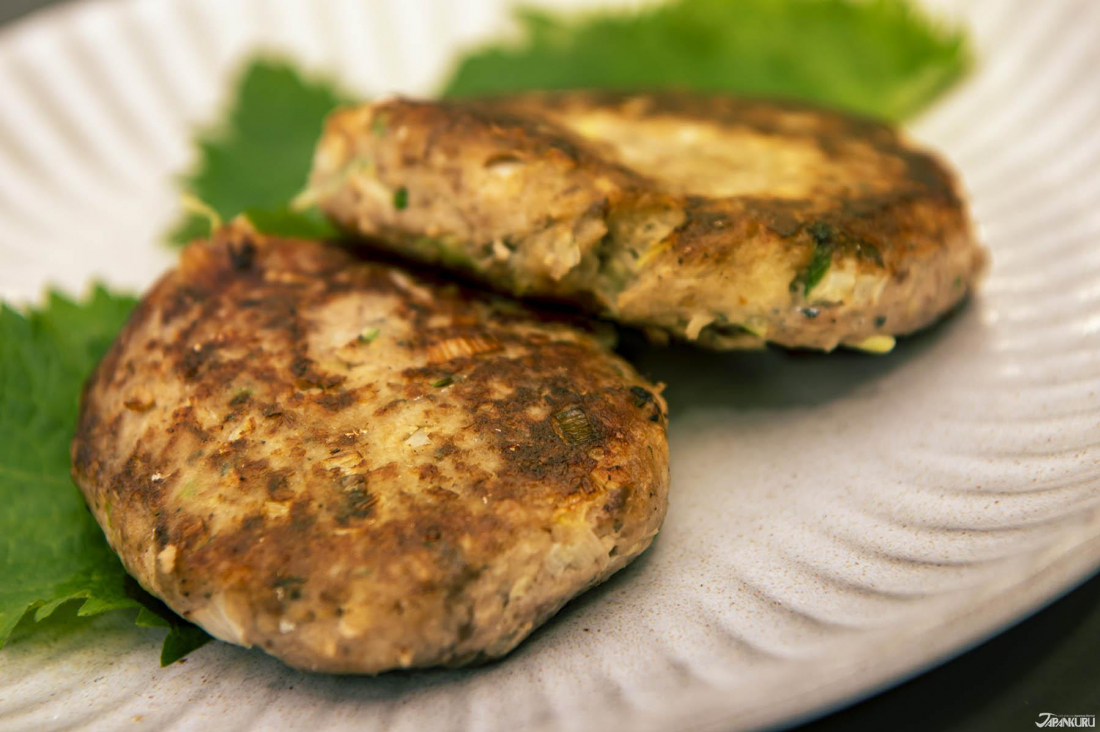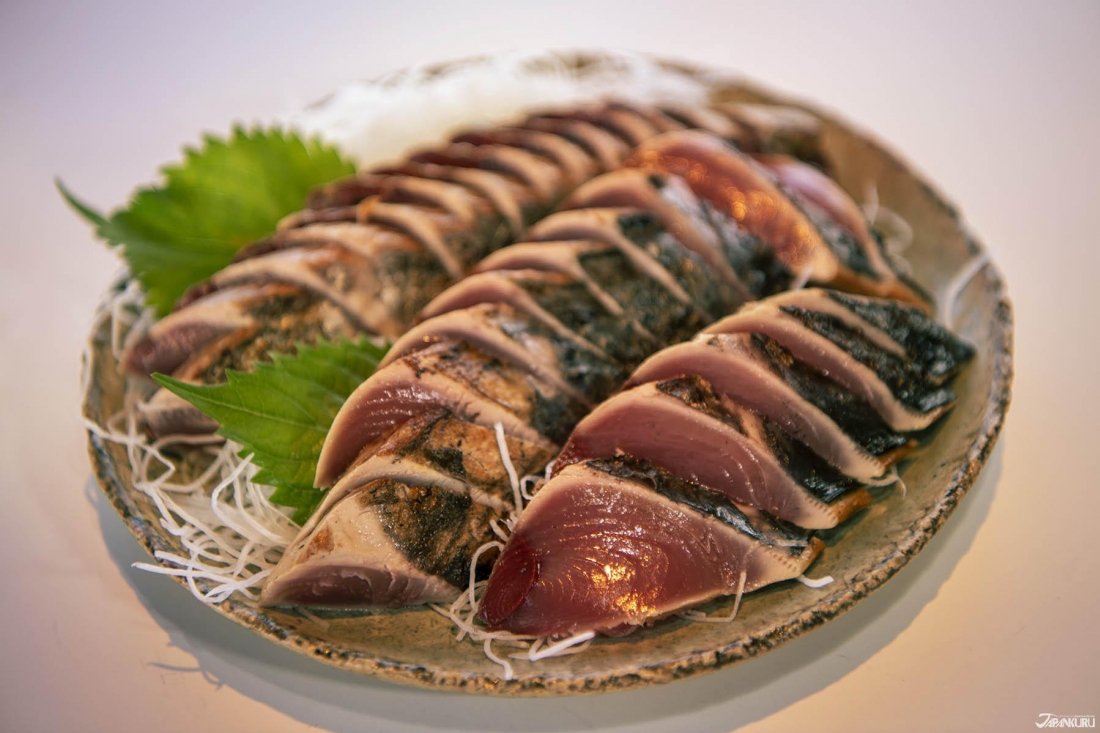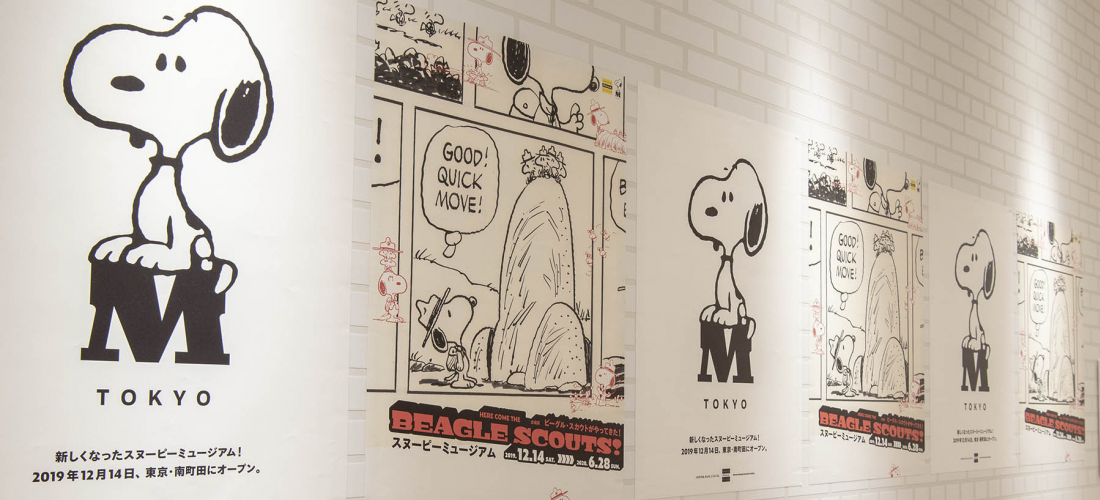
CONTENTS
Poissons plats de toutes sortes, listao, palourdes, balaou du Pacifique, algues aonori et plus encore, tout vient du marché des marchés aux poissons de Toyosu, là où les courants Oyashio et Kuroshio se retrouvent et emmènent toutes sortes de fruits de mer. Mais quels plats les habitants préparent-ils dans les villes côtières d’Iwaki et de Soma à Fukushima, pour tirer le meilleur parti de ces ingrédients frais?
Joban-mono et cuisine locale à Hama-dori
Si vous avez suivi la série Joban-mono ici sur Japankuru, vous connaissez probablement déjà l'histoire de cette ressource naturelle particulièrement populaire. Avec des éloges aussi nombreux concernant le Joban-mono, il n'est pas surprenant que vous vous demandiez quelle est la meilleure façon de le manger! Donc, si vous vous rendez dans la région côtière de Hama-dori de Fukushima, assurez-vous de rechercher quelques-uns de ces plats populaires, qui sont aussi les favoris des gens locaux de Fukushima.
Trois spécialités locales d’Iwaki
① Uni no Kaiyaki (oursin cuisiné dans une coquille de palourde)
Si vous aimez la saveur riche et la douceur légère de l'uni (oursin), ce luxueux petit uni no kaiyaki vous fait probablement déjà saliver. L'oursin doré sortant d'une coquille de palourde est un plat de fruits de mer emblématique originaire de la ville d'Iwaki.
Ce plat est une spécialité régionale de l'ère Meiji (1868 – 1912), avant le temps des réfrigérateurs, quand ils faisaient cuire à la vapeur l'uni frais sur des coquilles de palourdes pour prolonger sa durée de conservation. Ce plat est le régal ultime pour les amateurs de fruits de mer passionnés, et une bouchée de cet uni pêché dans la mer de Shiome remplira votre bouche d'un arôme sucré et du goût de l'océan.
② Sanma Popo-yaki (burger de poisson sanma)
Lors de la cuisson du sanma, la plupart des chefs japonais penseront au poisson grillé classique du Japon. Mais ce poisson est plus qu'omniprésent à Iwaki depuis longtemps, et avec tant de sanma entre les mains des cuisiniers locaux, certains d'entre eux ont clairement fait preuve d'un peu de créativité en cours de route, en particulier lorsqu'ils cuisinent pour des enfants difficiles qui pourrait ne pas aimer la forte saveur de ce poisson gras. La recette du popo-yaki est simple: dépouiller, désosser et enlever les entrailles du poisson, avant de le hacher finement et de le mélanger avec de l'oignon haché, du gingembre, du miso et peut-être un ingrédient secret ou deux pour égayer les choses. Avec ces ingrédients fortement aromatisés, le résultat final est un équilibre qui permet à quiconque d'apprécier facilement la saveur du sanma. Le popo-yaki est cuit comme vous pourriez faire cuire un hamburger ou un gâteau de crabe (une autre recette similaire), avec un peu d'huile dans une poêle.
«Yaki» signifie frit en japonais, mais la partie «popo» du nom du plat a quelques origines possibles. Le Japon est connu pour son utilisation courante des onomatopées, et certains disent que le bruit de ces galettes en train de frire sonne un peu comme "po po". Pendant longtemps, la recette était courante chez les pêcheurs qui faisaient griller les galettes de poisson en mer, et le bruit de l'huile dégoulinant du poisson et sur le feu pouvait aussi ressembler à "po po". D'autres pensent que le «po po» reproduit en fait le son que vous émettez lorsque vous expirez autour d'une bouchée de popo-yaki fraîchement sortie de la poêle, alors que vous essayez de refroidir les aliments trop chauds dans votre bouche.
Comme la plupart des plats cuisinés à la maison, les préférences de popo-yaki varient d'un ménage à l'autre, ce qui entraîne des recettes différentes où que vous alliez. Cette fois, l'équipe de Japankuru a pu voir du popo-yaki fraîchement préparé par les chefs d'Uenodai Yutaka, un magasin qui prépare et vend du popo-yaki dans la ville d'Iwaki. Le propriétaire du magasin, Yutaka Uenodai (écrit un peu différemment du nom du magasin), a ajouté que "éclabousser de la sauce soja après avoir fait frire les galettes est assez savoureux, ou même un peu de ketchup aux tomates. Le ketchup est particulièrement populaire auprès des enfants. Mais le popo-yaki est déjà assaisonné de miso dans la galette elle-même, c'est donc déjà délicieux sans aucun condiment ajouté. " Bien sûr, l esanma faisant tellement partie des prises quotidiennes à Iwaki, le popo-yaki n'est pas la seule recette locale unique. De nombreux cuisiniers sèchent également le poisson, traditionnellement, ajoutant une saveur supplémentaire avec du vin de riz mirin et d'autres condiments!
③ Katsuo no Warayaki (Thon grillé)
Le listao (ou bonite) grillé sur un feu de paille était à l'origine une spécialité locale dans la partie de la préfecture de Kochi qui était autrefois la province de Tosa – pas du tout proche de Fukushima. Mais avec une telle listao de haute qualité pêchée au large d'Iwaki, ces jours-ci, cela ressemble à de la cuisine de Fukushima. Du début de l'été à l'automne, lorsque la qualité du listao Joban-mono est imbattable, les morceaux de poisson sont grillés au-dessus des flammes intenses de la paille de Fukushima locale, vous donnant une chance de savourer la vraie saveur du listao.
Une fois le poisson grillé, il est rapidement jeté dans l'eau froide pour arrêter la cuisson, avant d'être coupé en tranches épaisses et servi avec du gingembre et de la sauce soja. Cette méthode de cuisson particulière permet à la couche la plus externe du poisson de cuire, mais laisse les parties internes crues comme du sashimi. La paille confère également un arôme fumé unique, intensifiant l'arome du listao. Il n'est pas difficile de comprendre pourquoi ils pourraient vouloir revendiquer cette recette particulière comme étant la leur, à Iwaki.
Trois spécialités de Soma
① Hokki-meshi (Riz à la palourde)
À Iwaki, le popo-yaki est une cuisine maison classique que l'on trouve sur les tables du dîner autour de la ville, mais qu'en est-il à Soma? La réponse pourrait bien être hokki-meshi: riz cuit avec des palourdes de Sakhaline (appelé hokki-gai, ホ ッ キ 貝, en japonais). Les palourdes de surf à Soma sont particulièrement célèbres, et ce plat simple montre leur saveur fraîche, préparée avec juste un peu de sauce soja et du saké de cuisson pour ajouter de la profondeur au riz et aux palourdes. La simplicité de la recette maison la rend populaire auprès de tous les membres de la famille, petits et grands. Et bien sûr, il est également disponible dans les restaurants, comme Takohachi, un restaurant que nous avons mentionné dans la partie 5 de cette série.
② Karei no Nitsuke (Sole en bouillon)
La dernière fois que nous avons entendu Kanji Tachiya, président de la Soma Futaba Fisheries Cooperative Association, il nous disait que "le poisson plat de Soma est considéré comme l'un des meilleurs du Japon". Et ce poisson plat particulièrement délicieux est un ingrédient quotidien de Soma, surtout lorsqu'il est cuit dans un bouillon sucré, une préparation appelée "nitsuke" (煮 付 け). Lors de la visite de l'équipe Japankuru à Soma, nous avons pu essayer de la sole rouge cuite (appelée karei, カ レ イ) dans un restaurant local, mais nous avons plus tard eu le privilège de voir une version maison préparée pour nous lors d'une interview en ligne avec le Club des femmes de l'Association de la coopérative.
On dit que les habitants de la région de Hama-dori ont le goût des saveurs fortes, et même dans ce plat simple, ils ont tendance à utiliser des variétés de sauce soja particulièrement audacieuses. Rien que par la couleur profonde du bouillon et son arôme alléchant, il est clair que vous ne serez pas satisfait d'une seule bouchée de ce poisson tendre.
③ Tako to Aonori no Sumono (pieuvre et algues au vinaigre) / Aonori Tempura
La lagune de Matsukawaura est un monument emblématique de Soma, et l'algue aonori cultivée dans les eaux de la lagune est un produit local célèbre. Non seulement les habitants dégustent les algues et les ajoutent à la soupe miso, mais ils ont également mis au point un certain nombre de recettes pour tirer le meilleur parti de l'ingrédient. Lors de notre discussion en ligne avec le club des femmes de l'Association coopérative des pêches de Soma Futaba, par exemple, elles ont concocté un petit plat unique avec du poulpe, des algues aonori et du vinaigre. La combinaison de poulpe, d'algues fraîches et d'un éclat de vinaigre aigre donnait au plat un côté estival absolument parfait.
La recette d'algues aonori la plus surprenante que nous ayons vue était peut-être ce tempura! Personne dans l'équipe Japankuru ne s'attendait à trouver un plat d'algues comme celui-ci. Le radis daikon râpé et le gingembre servis à côté ont aidé à réduire tout excès de gras, laissant les disques d'algues aonori légèrement battus avec un délicieux croquant et une saveur unique.
Delicieux Joban-mono & cuisine Hama-dori
Les six spécialités locales ci-dessus ne sont qu'une poignée des nombreux plats Joban-mono trouvés autour de la région côtière de Fukushima, cuisinés et mangés tous les jours par les habitants de Hama-dori. Si l'un d'entre eux a attiré votre attention, nous vous recommandons vivement de visiter Iwaki et Soma chaque fois que vous en avez l'occasion, pour essayer une partie de cette nourriture par vous-même!
Si cela semble difficile, cependant, il y a toujours Tokyo! Dans le prochain article, la toute dernière partie de notre série Joban-mono, nous examinerons les restaurants où les convives pourront profiter des saveurs fraîches de Joban-mono, dans la capitale japonaise. Si vous êtes un peu gourmand ou si vous aimez simplement manger, cliquez sur la partie 10.
Details
NAME:Fukushima Dining
COMMENT
FEATURED MEDIA
VIEW MORE 
A New Tokyo Animal Destination: Relax & Learn About the World’s Animals in Japan
#pr #japankuru #anitouch #anitouchtokyodome #capybara #capybaracafe #animalcafe #tokyotrip #japantrip #카피바라 #애니터치 #아이와가볼만한곳 #도쿄여행 #가족여행 #東京旅遊 #東京親子景點 #日本動物互動體驗 #水豚泡澡 #東京巨蛋城 #เที่ยวญี่ปุ่น2025 #ที่เที่ยวครอบครัว #สวนสัตว์ในร่ม #TokyoDomeCity #anitouchtokyodome

Shohei Ohtani Collab Developed Products & Other Japanese Drugstore Recommendations From Kowa
#pr #japankuru
#kowa #syncronkowa #japanshopping #preworkout #postworkout #tokyoshopping #japantrip #일본쇼핑 #일본이온음료 #오타니 #오타니쇼헤이 #코와 #興和 #日本必買 #日本旅遊 #運動補充能量 #運動飲品 #ช้อปปิ้งญี่ปุ่น #เครื่องดื่มออกกำลังกาย #นักกีฬา #ผลิตภัณฑ์ญี่ปุ่น #อาหารเสริมญี่ปุ่น

도쿄 근교 당일치기 여행 추천! 작은 에도라 불리는 ‘가와고에’
세이부 ‘가와고에 패스(디지털)’ 하나면 편리하게 이동 + 가성비까지 완벽하게! 필름카메라 감성 가득한 레트로 거리 길거리 먹방부터 귀여움 끝판왕 핫플&포토 스폿까지 총집합!
Looking for day trips from Tokyo? Try Kawagoe, AKA Little Edo!
Use the SEIBU KAWAGOE PASS (Digital) for easy, affordable transportation!
Check out the historic streets of Kawagoe for some great street food and plenty of picturesque retro photo ops.
#pr #japankuru #도쿄근교여행 #가와고에 #가와고에패스 #세이부패스 #기모노체험 #가와고에여행 #도쿄여행코스 #도쿄근교당일치기 #세이부가와고에패스
#tokyotrip #kawagoe #tokyodaytrip #seibukawagoepass #kimono #japantrip

Hirakata Park, Osaka: Enjoy the Classic Japanese Theme Park Experience!
#pr #japankuru #hirakatapark #amusementpark #japantrip #osakatrip #familytrip #rollercoaster #retrôvibes #枚方公園 #大阪旅遊 #關西私房景點 #日本親子旅行 #日本遊樂園 #木造雲霄飛車 #히라카타파크 #สวนสนุกฮิราคาตะพาร์ค

🍵Love Matcha? Upgrade Your Matcha Experience With Tsujiri!
・160년 전통 일본 말차 브랜드 츠지리에서 말차 덕후들이 픽한 인기템만 골라봤어요
・抹茶控的天堂!甜點、餅乾、飲品一次滿足,連伴手禮都幫你列好清單了
・ส่องมัทฉะสุดฮิต พร้อมพาเที่ยวร้านดังในอุจิ เกียวโต
#pr #japankuru #matcha #matchalover #uji #kyoto #japantrip #ujimatcha #matchalatte #matchasweets #tsujiri #말차 #말차덕후 #츠지리 #교토여행 #말차라떼 #辻利抹茶 #抹茶控 #日本抹茶 #宇治 #宇治抹茶 #日本伴手禮 #抹茶拿鐵 #抹茶甜點 #มัทฉะ #ของฝากญี่ปุ่น #ชาเขียวญี่ปุ่น #ซึจิริ #เกียวโต

・What Is Nenaito? And How Does This Sleep Care Supplement Work?
・你的睡眠保健品——認識「睡眠茶氨酸錠」
・수면 케어 서플리먼트 ‘네나이토’란?
・ผลิตภัณฑ์เสริมอาหารดูแลการนอน “Nenaito(ネナイト)” คืออะไร?
#pr #japankuru #sleepcare #japanshopping #nenaito #sleepsupplement #asahi #睡眠茶氨酸錠 #睡眠保健 #朝日 #l茶胺酸 #日本藥妝 #日本必買 #일본쇼핑 #수면 #건강하자 #네나이토 #일본영양제 #อาหารเสริมญี่ปุ่น #ช้อปปิ้งญี่ปุ่น #ร้านขายยาญี่ปุ่น #ดูแลตัวเองก่อนนอน #อาซาฮิ

Japanese Drugstore Must-Buys! Essential Items from Hisamitsu® Pharmaceutical
#PR #japankuru #hisamitsu #salonpas #feitas #hisamitsupharmaceutical #japanshopping #tokyoshopping #traveltips #japanhaul #japantrip #japantravel

Whether you grew up with Dragon Ball or you just fell in love with Dragon Ball DAIMA, you'll like the newest JINS collab. Shop this limited-edition Dragon Ball accessory collection to find some of the best Dragon Ball merchandise in Japan!
>> Find out more at Japankuru.com! (link in bio)
#japankuru #dragonball #dragonballdaima #animecollab #japanshopping #jins #japaneseglasses #japantravel #animemerch #pr

This month, Japankuru teamed up with @official_korekoko to invite three influencers (originally from Thailand, China, and Taiwan) on a trip to Yokohama. Check out the article (in Chinese) on Japankuru.com for all of their travel tips and photography hints - and look forward to more cool collaborations coming soon!
【橫濱夜散策 x 教你怎麼拍出網美照 📸✨】
每次來日本玩,是不是都會先找旅日網紅的推薦清單?
這次,我們邀請擁有日本豐富旅遊經驗的🇹🇭泰國、🇨🇳中國、🇹🇼台灣網紅,帶你走進夜晚的橫濱!從玩樂路線到拍照技巧,教你怎麼拍出最美的夜景照。那些熟悉的景點,換個視角說不定會有新發現~快跟他們一起出發吧!
#japankuru #橫濱紅磚倉庫 #汽車道 #中華街 #yokohama #japankuru #橫濱紅磚倉庫 #汽車道 #中華街 #yokohama #yokohamaredbrickwarehouse #yokohamachinatown

If you’re a fan of Vivienne Westwood's Japanese designs, and you’re looking forward to shopping in Harajuku this summer, we’ve got important news for you. Vivienne Westwood RED LABEL Laforet Harajuku is now closed for renovations - but the grand reopening is scheduled for July!
>> Find out more at Japankuru.com! (link in bio)
#japankuru #viviennewestwood #harajuku #omotesando #viviennewestwoodredlabel #viviennewestwoodjapan #비비안웨스트우드 #오모테산도 #하라주쿠 #日本購物 #薇薇安魏斯伍德 #日本時尚 #原宿 #表參道 #japantrip #japanshopping #pr

Ready to see TeamLab in Kyoto!? At TeamLab Biovortex Kyoto, the collective is taking their acclaimed immersive art and bringing it to Japan's ancient capital. We can't wait to see it for ourselves this autumn!
>> Find out more at Japankuru.com! (link in bio)
#japankuru #teamlab #teamlabbiovortex #kyoto #kyototrip #japantravel #artnews
Photos courtesy of teamLab, Exhibition view of teamLab Biovortex Kyoto, 2025, Kyoto ® teamLab, courtesy Pace Gallery

Japanese Makeup Shopping • A Trip to Kamakura & Enoshima With Canmake’s Cool-Toned Summer Makeup
#pr #canmake #enoshima #enoden #에노시마 #캔메이크 #japanesemakeup #japanesecosmetics

⚔️The Robot Restaurant is gone, but the Samurai Restaurant is here to take its place. Check it out, and don't forget your coupon!
🍣신주쿠의 명소 로봇 레스토랑이 사무라이 레스토랑으로 부활! 절찬 쿠폰 발급중
💃18歲以上才能入場的歌舞秀,和你想的不一樣!拿好優惠券去看看~
#tokyo #shinjuku #samurairestaurant #robotrestaurant #tokyotrip #도쿄여행 #신주쿠 #사무라이레스토랑 #이색체험 #할인이벤트 #歌舞伎町 #東京景點 #武士餐廳 #日本表演 #日本文化體驗 #japankuru #japantrip #japantravel #japanlovers #japan_of_insta

Japanese appliance & electronics shopping with our KOJIMA x BicCamera coupon!
用JAPANKURU的KOJIMA x BicCamera優惠券買這些正好❤️
코지마 x 빅 카메라 쿠폰으로 일본 가전 제품 쇼핑하기
#pr #japankuru #japanshopping #kojima #biccamera #japaneseskincare #yaman #dji #osmopocket3 #skincaredevice #日本購物 #美容儀 #相機 #雅萌 #日本家電 #일본여행 #면세 #여행꿀팁 #일본쇼핑리스트 #쿠폰 #일본쇼핑 #일본브랜드 #할인 #코지마 #빅카메라 #japankurucoupon















































